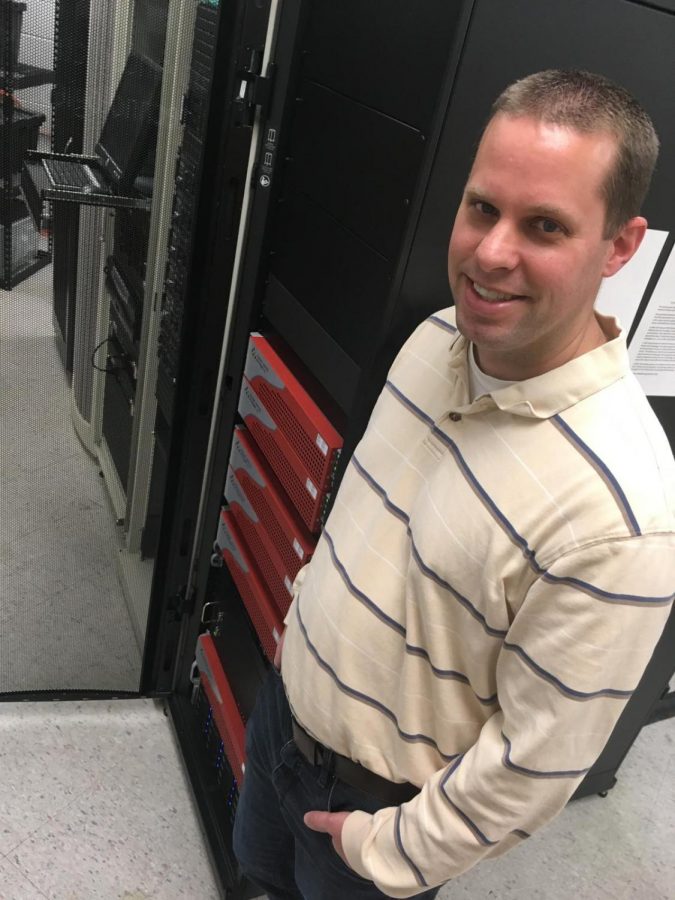New supercomputer ‘Borg’ takes first steps
Chris Wieringa said he’s been busy lately.
The Calvin computer science lab manager has been hard at work assembling and testing the newest addition to the Calvin computer lab — a bright red supercomputer named Borg.
Borg booted up for the first time last week, so it’s too early to say, but Wieringa said the new machine will probably be two to four times more powerful than its recently decommissioned successor, Dahl, which was in operation since 2010.
The machine is housed in the inner core of the Science Building’s third floor in a large, black cabinet. Borg is composed of 368 computing cores, compared to a typical laptop’s four or eight. And while the same laptop may have four gigabytes of RAM, Borg has 2,968. Wierenga will put the machine through “stress testing,” with all nodes operating near maximum capacity, fans whirring and the back of the machine blowing hot air.
The machine is named after Anita Borg (1948–2003), a prominent computer scientist who founded the Institute for Women and Technology, and worked so that women would be “represented at all levels of the [computing] pipeline,” according to the computer’s website, borg.calvin.edu.
Matthew Heun, an engineering professor, said that, with a bit of coding work on his part, he is looking forward to Borg performing his analyses 10 to 100 times faster.
And the list of professors interested in using the system for research is getting longer. Geography professor Jason Van Horn is planning to work with 3D urban environment simulations of Grand Rapids, while economics professor Becky Haney anticipates using the machine for economic simulations.
Haney said her experiments, which mathematically simulate how societies progress and use resources, would take a standard computer days to complete, sometimes up to a week for one simulation. With Borg, they will take about an hour.
Chemistry professor Doug Vander Griend also plans on using Borg, as the new home for the Calvin-designed site sivvu.org, which will allow for a world-wide audience to use the site’s chemical modeling, complex analyses, and database resources.
Wierenga said the goal is to have Borg ready for work by the time summer research starts.
“We’re really looking forward to what comes out of this,” Wierenga said.
Borg is funded by a $259,000 grant from the National Science Foundation, awarded to professor Joel Adams. The science division and Calvin IT (CIT) also provided support. Wieringa said that CIT and the physical plant have been working together to install a new set of circuits to supply power and a fiber optic network for high-speed access elsewhere on campus.
Adams said that Dahl had been “showing its age” and that it was time for change. He said that the new machine will consume less energy than its predecessor.
“It is bittersweet to see Dahl go, as it has been a workhorse that facilitated much good work,” Adams said.
For more information visit borg.calvin.edu.







